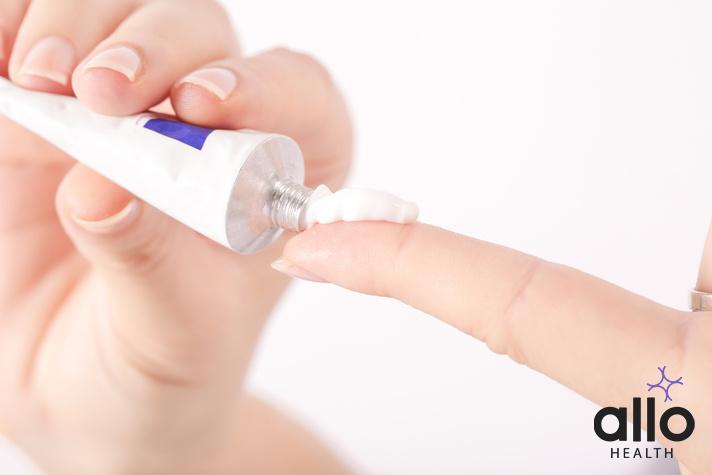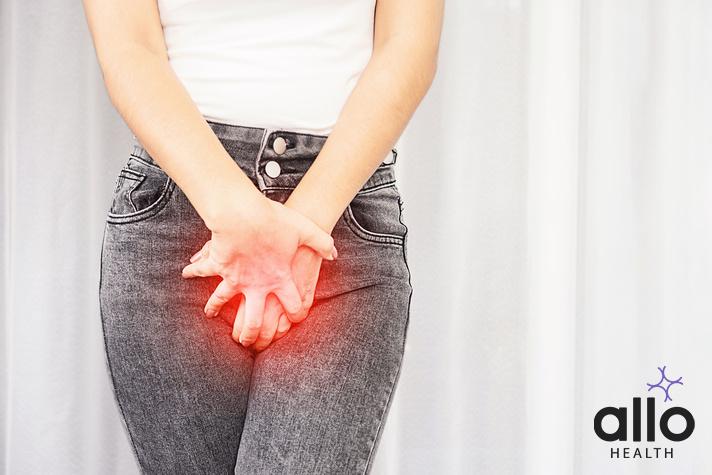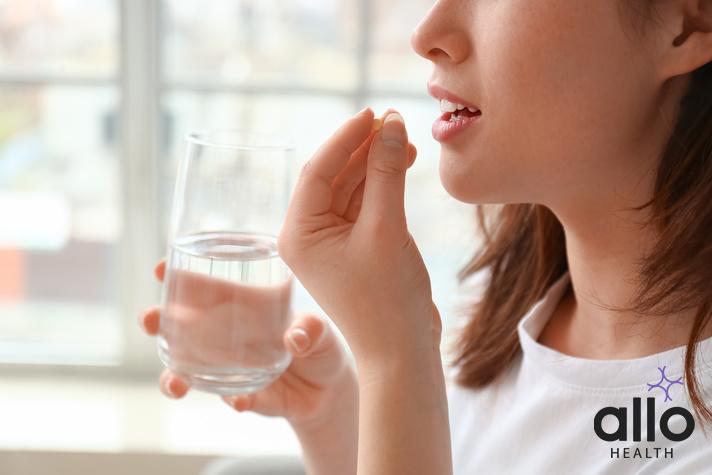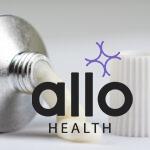Why Use Estrogen Cream for Vulvodynia?

Allo Health is dedicated to personalized well-being, offering support and trusted information tailored to individual health goals. The platform emphasizes human-generated content, led by a distinguished medical team of experts, including physicians and sexual health specialists. Their commitment to credibility involves rigorous fact-checking, authoritative research, and continuous updates to ensure accurate, up-to-date information. Allo Health's unique approach goes beyond conventional platforms, providing expert-led insights and a continuous commitment to excellence, with user feedback playing a crucial role in shaping the platform's authoritative voice.

Dr. Raj. R holds an undergraduate medical degree from the Philippines, and has a bachelors background in Psychology. His experience working in the field of urology further brought his interest forward in working towards his passion of understanding the science of attraction, intimacy, sex and relationships. A key motto he practices by remains unprejudiced and non-judgemental care.
Why This Was Upated?
Our experts continually monitor the health and wellness space, and we update our articles when new information became available.
Updated on 04 June, 2024
- Article was updated as part of our commitment to diversity, equity, and inclusion.

"The following blog article may discuss medical treatments and interventions. However, it is important to note that the information provided is for general educational purposes only and should not be considered as a substitute for professional medical advice, diagnosis, or treatment. Always seek the guidance of a qualified healthcare professional for personalized medical advice.
Book consultation
Medical treatments are complex and should be tailored to individual circumstances. The information presented in this blog may not be applicable to everyone, as each person's medical condition, history, and needs are unique. Only a qualified healthcare professional can evaluate your specific medical situation, consider relevant factors, and provide appropriate recommendations for diagnosis, treatment options, and monitoring.
It is crucial to note that self-diagnosis, self-medication, or relying solely on the information provided in this blog for treatment decisions can have serious health consequences. "
Vulvodynia, characterized by chronic vulvar pain, presents a significant challenge for many women. Estrogen cream, among other treatments, plays a pivotal role in managing this condition. This article explores the use of estrogen cream for vulvodynia, delving into its efficacy, application, and role in a broader treatment strategy.
What is Vulvodynia?
Vulvodynia is a medical condition characterized by chronic vulvar pain without an identifiable cause. The term “vulvar” refers to the external genitals of a woman, and “vulvodynia” specifically relates to pain in this area. The symptoms of vulvodynia can significantly impact a woman’s quality of life, affecting various aspects, including sexual intercourse, due to the discomfort and pain involved.
Types of Vulvodynia
There are primarily two types of vulvodynia:
- Generalized Vulvodynia: This involves pain over the entire vulva and can last for extended periods of time. The pain may be constant or occur intermittently.
- Localized Vulvodynia: Here, the pain is confined to a specific area of the vulva.
Symptoms and Triggers
The main symptom of vulvodynia is chronic vulvar pain, which can manifest as burning, stinging, itching, or rawness in the vulvar region. The pain can be exacerbated by certain triggers, such as prolonged sitting, sexual intercourse, or wearing tight-fitting clothing. Vulvodynia is often associated with other medical conditions like vaginal infections or bacterial infections, which can further irritate the vulvar area.
Seeking Professional Help
Consultation with a health care professional is essential for the proper treatment of vulvodynia. They can assess the symptoms and recommend appropriate treatment options, including topical creams, alternative therapies, and long-term pain relief strategies.
Why Estrogen Cream for Vulvodynia?
Estrogen cream is used to treat vulvodynia for several key reasons:
- Hormonal Balance Restoration: Vulvodynia can be linked to hormonal imbalances, particularly a deficiency in estrogen. Estrogen plays a crucial role in maintaining the health of vaginal and vulvar tissues. By applying estrogen cream topically, it can help restore hormonal balance and improve the health of these tissues.
- Reduce Inflammation and Irritation: Estrogen has properties that can reduce inflammation and irritation in the vulvar area. This can alleviate some of the discomfort and pain associated with vulvodynia.
- Enhance Tissue Repair and Regeneration: Estrogen can promote the repair and regeneration of delicate tissues in the vulvar region. This can be especially beneficial in cases where vulvodynia is associated with thinning or degradation of vulvar tissues.
- Alleviate Pain: Estrogen cream can help in reducing the pain signals in the vulvar area. By improving the health of vulvar tissues and reducing inflammation, it may decrease the sensitivity and pain experienced with vulvodynia.
- Adjunct to Other Treatments: Often, vulvodynia is best managed through a combination of treatments. Estrogen cream can be used alongside other therapies such as physical therapy, nerve blocks, and other pain management strategies to provide more comprehensive relief.
It’s important to note that the use of estrogen cream for vulvodynia should be under the guidance of a healthcare professional, as they can assess individual needs and monitor for any potential side effects.
Application and Effectiveness
The application method and effectiveness of estrogen cream for treating vulvodynia are as follows:
Application Method:
- Direct Topical Application: Estrogen cream is applied directly to the affected area of the vulva. It’s essential to follow the dosage and frequency as prescribed by a health care professional.
- Clean and Dry: Before applying, the vulvar area should be clean and dry.
- Apply Minimal Quantity: Only a small amount of cream is needed, as directed by the doctor.
- Gentle Application: Apply the cream gently, avoiding any rough handling of the sensitive vulvar tissues.
- Regular Usage: Consistency in application as per the prescribed schedule is crucial for effectiveness.
Effectiveness:
- Relief of Symptoms: Estrogen cream can help alleviate the symptoms of vulvodynia, particularly when the condition is related to hormonal changes or thinning and inflammation of the vulvar tissues.
- Improves Tissue Health: It aids in the regeneration and health of vulvar tissues, potentially reducing pain signals.
- Response Time: The effectiveness can vary among individuals. Some may experience relief relatively quickly, while others might need a longer duration to notice improvements.
- Combination Therapy: Estrogen cream is often more effective when used in combination with other treatments like pelvic floor therapy, oral medications, or alternative therapies.
- Personalized Treatment: The effectiveness can also depend on the underlying causes of vulvodynia and individual health factors. It’s not a one-size-fits-all solution.
It’s important to note that while estrogen cream can be effective for some women with vulvodynia, it’s not universally beneficial for all. Continuous evaluation and adjustment of the treatment plan by a healthcare professional are essential for achieving the best outcomes.
Risks and Considerations

Using estrogen cream for the treatment of vulvodynia comes with its own set of risks and considerations. It’s crucial to weigh these factors carefully and discuss them with a healthcare professional before starting treatment. Here are some key risks and considerations associated with the use of estrogen cream in vulvodynia treatment:
Hormonal Effects
- Hormonal Imbalance: Topical estrogen can potentially affect hormonal balance, especially if absorbed systemically over prolonged periods.
- Contraindications: Women with certain medical conditions, such as hormone-sensitive cancers, may not be suitable candidates for estrogen cream therapy.
Common Side Effects
- Adverse Effects: Some women may experience irritation, itching, or burning at the site of application.
- Systemic Side Effects: Although less common with topical application, there’s a potential risk of systemic side effects like nausea, breast tenderness, or headaches.
Long-Term Use
- Tolerance and Effectiveness: Over time, the body might develop tolerance, reducing the effectiveness of the cream.
- Dependence: There’s a risk of becoming reliant on the cream for symptom relief, which might complicate long-term management of vulvodynia.
Interaction with Other Treatments
- Interference with Other Medications: Estrogen cream might interact with other medications, including other topical treatments for vulvodynia.
- Impact on Alternative Therapies: Its use might affect the outcomes of non-pharmacological treatments like pelvic floor therapy.
Underlying Conditions
- Masking Symptoms: Estrogen cream may mask symptoms of underlying conditions like infections or dermatological concerns, delaying proper diagnosis and treatment.
- Pre-existing Medical Conditions: Women with pre-existing conditions like liver disease might face additional risks with hormonal treatments.
Compliance and Correct Usage
- Application Protocol: Incorrect application can lead to reduced efficacy or increased side effects.
- Regular Medical Monitoring: Regular follow-ups are essential to monitor the response to treatment and adjust doses.
Psychological Impact
- Emotional and Psychological Considerations: Chronic pain conditions like vulvodynia can have a significant emotional toll, and reliance on medication might affect mental health.
Pregnancy and Breastfeeding Considerations
- Safety During Pregnancy and Lactation: The safety of estrogen cream during pregnancy and breastfeeding is an important consideration and should be discussed with a healthcare provider.
While estrogen cream can be an effective component of vulvodynia treatment for some women, it’s important to consider the potential risks and engage in a thorough discussion with a healthcare provider to ensure it’s the right choice based on individual health status and treatment goals.
Alternative Treatments

Treating vulvodynia often requires a multi-faceted approach, combining various treatments for effective relief. Alongside estrogen cream, other alternative treatments and management strategies include:
Topical Medications
- Lidocaine Cream: A numbing agent that can help alleviate pain.
- Cortisone Creams: Used to reduce inflammation and irritation.
Oral Medications
- Antidepressants: Certain antidepressants can help manage chronic pain.
- Anticonvulsants: These are sometimes used for neuropathic pain relief.
Physical Therapy
- Pelvic Floor Therapy: Helps in relaxing and strengthening pelvic floor muscles, which can reduce muscle tension and pain.
- Biofeedback: Helps in understanding and controlling pelvic muscle responses.
Nerve Block Injections
- These injections can help in temporarily blocking pain signals in the affected nerves.
Diet and Lifestyle Changes
- Avoiding foods and products that irritate the vulva.
- Wearing loose, breathable clothing to reduce irritation.
Sex Therapy and Counseling
- Helps address the psychological and emotional aspects, especially when vulvodynia affects sexual function and intimacy.
Alternative Therapies
- Acupuncture: Some find relief through this traditional Chinese medicine technique.
- Mindfulness and Stress Reduction Techniques: Activities like yoga and meditation can help manage the stress associated with chronic pain.
Surgery
- In very rare cases, surgery might be considered for localized vulvodynia, particularly when other treatments have not been effective.
It’s important to consult with a health care professional to determine the most suitable treatment plan, as vulvodynia can vary greatly in symptoms and severity among individuals. The right combination of therapies can offer significant relief and improve the quality of life for those suffering from vulvodynia.
Conclusion
Vulvodynia treatment, including the use of estrogen cream, requires a tailored approach. It’s essential to understand the types of vulvodynia, its symptoms, and the various treatment options available. With the right combination of treatments, women with vulvodynia can find significant relief and improve their quality of life.
Most Asked Questions
-
What exactly is vulvodynia and how do I know if I have it?
Vulvodynia is a condition where you feel pain around the area of your vagina, known as the vulva. This pain might feel like burning or stinging. It’s different for everyone; some women feel it all over the vulva, while others only in certain spots. If you’re experiencing this kind of pain, especially if it’s been going on for a while, it’s a good idea to talk to your doctor.
-
How does estrogen cream help with vulvodynia?
Estrogen cream is applied directly to the vulva. It can help calm the pain in two ways: by reducing swelling and irritation, and by making the skin in that area healthier, which might lessen the pain signals. Remember, it’s important to use this cream as directed by your healthcare provider.
-
Are there other treatments I should consider for vulvodynia?
Yes, treating vulvodynia often involves more than one method. Besides estrogen cream, other treatments include physical therapy to relax and strengthen your pelvic floor muscles, medications to block nerve pain, and sometimes changes in diet. For some women, therapies like counseling or sex therapy are helpful, especially if vulvodynia is affecting your sex life.
-
Can changes in lifestyle or diet help with vulvodynia?
Yes. Alongside medical treatments, making changes in your daily routine or diet might help. Strengthening exercises for your pelvic floor, managing stress, and avoiding foods that irritate your condition can be beneficial. It’s always a good idea to discuss these options with your healthcare provider to find what works best for you.






































